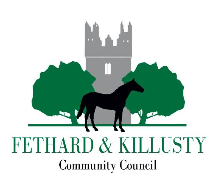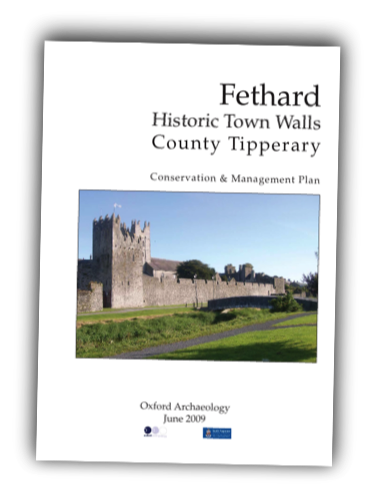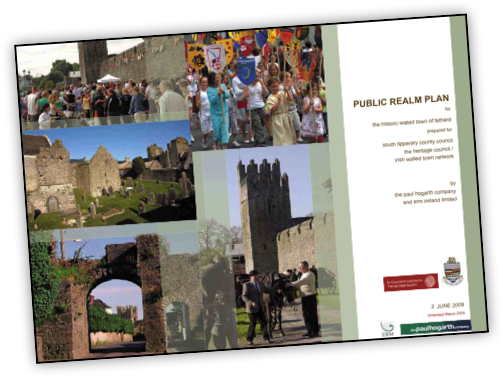Fethard Visitor Information Boards 1 to 6

The Irish attacking the Anglo-Norman invaders
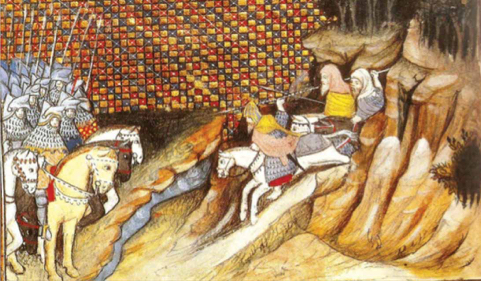
Walled market towns were set up for taxation and control in various parts of Europe throughout the medieval period. The settlement’s borough status meant that legal privileges were granted to merchants and other high-status individuals to become burgesses. Their presence, in turn, was used to entice colonists from England and Wales.
The Anglo-Norman town of Fethard was established as a borough (circa 1208) by William de Braose, seventh Baron of Abergavenny, Wales. The de Braose family originated as Barons of Briouze, Normandy. De Braose had vast land- holdings in south Wales and was Lord of Limerick.
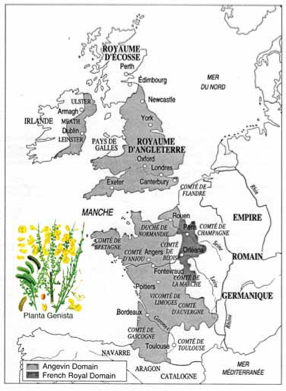
Angevin Empire c.1200
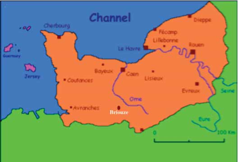
Normandy, France.
Anglo-Norman families came to Ireland in large numbers following the invasion (from 1169)
under Henry II (Plantagenet - his surname), Count of Anjou and King of England whose dynastic (‘Angevin’) empire extended from Scotland to the Pyrenees.
Many of their surnames are still found in large numbers in and around Fethard eight hundred years later, names including:
Archdeacon, Barrett, Barry, Bermingham, Blake, Brett, Browne, Butler, Burke, Cantwell, Cody, Collier, Comerford, Condon, Costello, Dalton, Darcy, Dillon, English, Everard, Fanning, Fleming, Fitzgerald, Gaule, Grace, Grant, Hackett, Hayes, Jordan, Joyce, Keating, Lacey, Laffan, Landy, Lawless, Mandeville, Maunsell, Marshall, Mason, Millet, Mockler, Morris, Nagle, Nash, Neville, Nugent, Pierce, Plunkett, Pollard, Power, Prendergast, Purcell, Rice, Roche, Rochford, Russell, Short, Shortall, Sinnott, Stafford, Stapleton, Stokes, Sutton, Tobin, Tyrrell, Wall, Walsh, White.
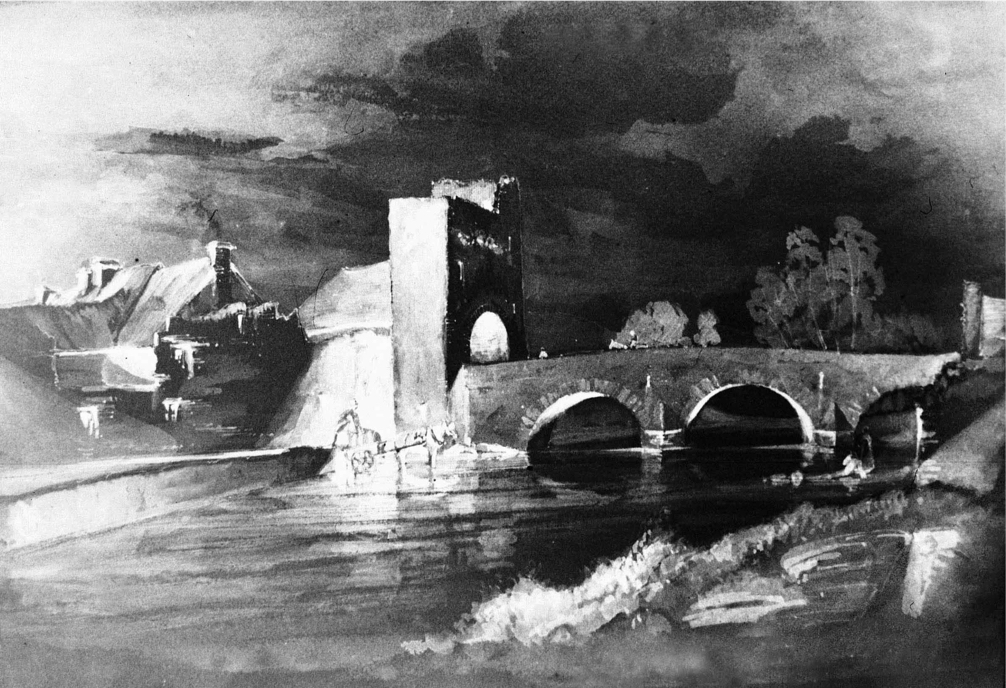
The West Gate and Madam’s Bridge
Part of the gatehouse still stands at the south-east corner of the bridge. It was a three-storey tower with a half-storey (‘caphouse’) above. It was largely de- molished in the 1880s for road widening. The bridge, on the site of a medieval predecessor, is of two phases. A straight joint and quoins are visible under- neath, showing that a probable mid- or late 18th century bridge was widened on its north side by half its original width, probably early in the 19th century.
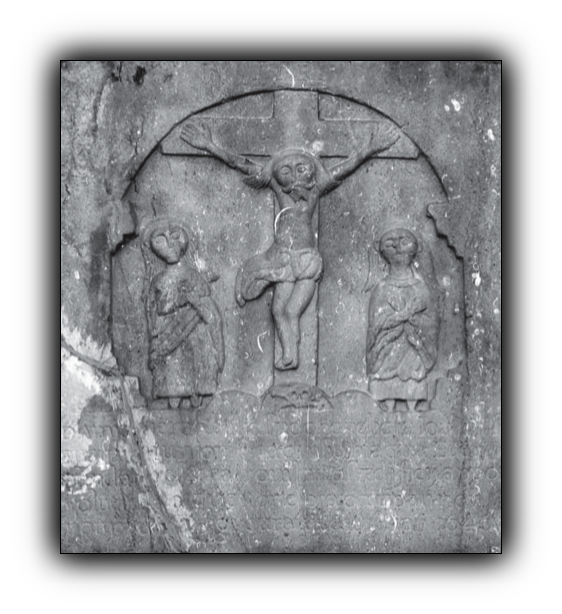
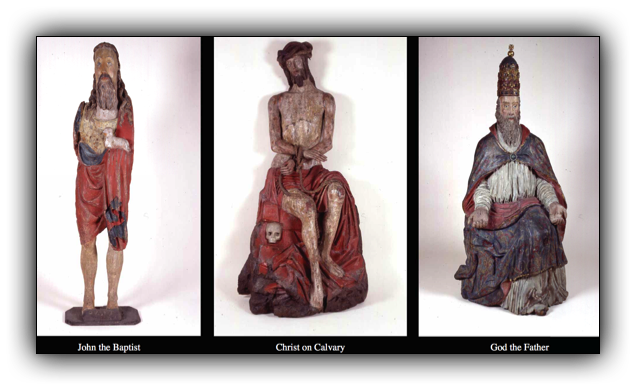
Fethard’s late medieval statues now housed at the National Museum of Ireland
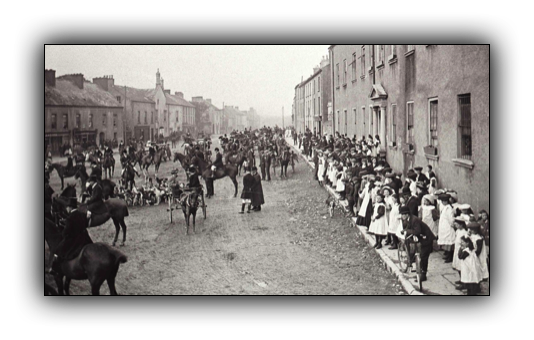
The Barton house was converted into a British cavalry barracks in 1805, four years after the Act of Union. A large drill ground was set up behind it and Fethard became known as a garrison town.

The Market Squuare
The medieval layout of Fethard is still evident today with all five entrance roads leading into the market square.
Each route is deliberately right-angled, perhaps for reasons of defence. The early 13th century square is similar in shape and size to that of Cashel indicating that it may have been laid out under the patron- age of the archbishops of Cashel. New towns were laid out with ‘burgage’ plots – each owner or burgess was entitled to a plot of land, usually a long thin strip extending from the main street to the town wall.
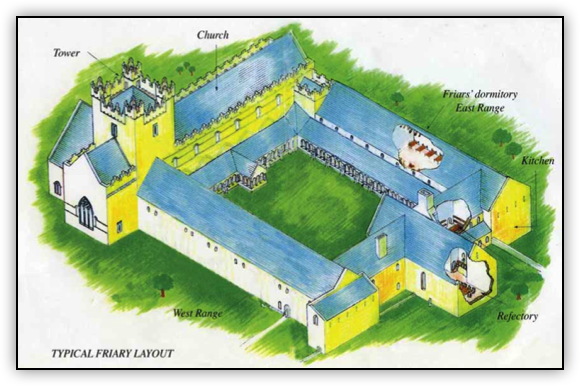
‘Fethard Abbey’
In 1305 a house of Augustinian friars was established just outside the town. In 1540, during the Dissolution of the Monasteries under Henry VIII, the friary was surrendered by William Burder, the prior, to the Crown. The friary then comprised a church, steeple, dormitory, hall, two chambers, a kitchen, a store, two stables, a cemetery, an orchard, two gardens, twenty-four messuages (hous- es), nine acres of arable, one acre of meadow, a water-mill and a bakehouse.
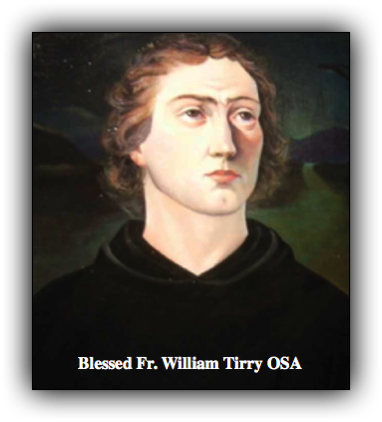
Blessed Fr William Tirry
Fr William Tirry was appointed Prior in 1652. In January the following year a proclamation was published charging ‘all priests, friars, bishops and other clergy who derive their authority from the See Apostolic of the Pope of Rome, to depart out of the Kingdom of Ireland under pain of death, within 40 days.’ Fr Tirry went into hiding in the ruined friary. He was arrested on Holy Saturday 1654 and executed, wearing his Augustinian habit,
in the market place in Clonmel on 12 May 1654. He was beatified by Pope John Paul II in 1992. His body is believed to lie within the grounds of the friary.
Conservation of the Town Wall
The southern section was reconstructed by the Friends of Fethard and unveiled in 1993 by President Mary Robinson. The other sections have been the subject of ongoing repairs since 2007, Funded under the National Development Plan and administered by The Heritage Council and South Tipperary County Council. Fethard is a proud member of the Irish Walled Towns Network.
